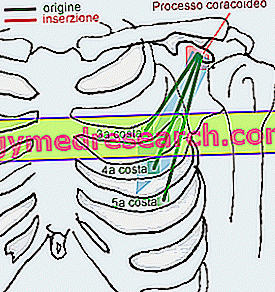Definition
Cervical stenosis is a reduction in the size of the vertebral canal at the level of the neck, with a reduction in the space available for the nervous structures that flow inside it.
The alterations that derive from this process can lead to pressure on the roots of the spinal nerves, before they escape from the intervertebral foramina.
The stenosis at the level of the cervical spine may be present from birth (it is, therefore, a congenital malformation) or acquired.
The process can be the consequence of degenerative phenomena at the base of arthrosis (or osteoarthritis), so it may depend, in part, on excess weight, postural defects, aging, a sedentary lifestyle and hereditary predisposition.
Cervical stenosis can also be favored by specific traumas, such as the so-called "whiplash", that is a violent backlash movement of the neck that is suffered following a rear-end collision.
Other causes include the herniated disc and spondylolisthesis (a condition in which a vertebra slides forward with respect to the one below).
Additional pathologies that predispose to the narrowing of the vertebral canal include Paget's disease of bone, rheumatoid arthritis, ankylosing spondylitis and scoliosis of the cervical spine.

Most common symptoms and signs *
- Asthenia
- dizziness
- Neck pain
- Hand and wrist pain
- Shoulder pain
- Arm pain
- Back pain
- Articolar pains
- Tingling in the right arm
- Tingling in the Left Arm
- Tingling in the hands
- Hypoaesthesia
- weakness
- Backache
- Headache
- Nausea
- Paresthesia
- Stiffness in the muscles of the back and neck
- Articular noises
- Lhermitte sign
- Spinal stenosis
Further indications
Stenosis manifests itself with symptoms that vary depending on the nervous structures involved, but cervical pain is commonly present, with irradiation between the nape and shoulder blades, exacerbated by movement.
Patients with cervical stenosis complain of painful pangs similar to electric shocks, especially when they flex the neck by turning the chin towards the chest. Cervical stenosis can also cause numbness, weakness, burning sensations and tingling in the arms.
Other symptoms include headaches, nausea and dizziness in changes of position, feeling of stiffness and limitation of movement (flexion, extension, lateral inclination and rotation). Over time, cervical stenosis can develop into a myelopathy due to friction on the spinal cord, sometimes involving lower nerve roots (radiculopathy).
Regarding the diagnosis, cervical stenosis is suspected on the basis of characteristic symptoms and the outcome of imaging studies (computerized axial tomography and nuclear magnetic resonance) and neurophysiological tests to confirm the presence and degree of involvement of the spinal root .
To relieve symptoms, it is possible to temporarily take pain-relieving and anti-inflammatory drugs. In the presence of radiculopathy, the neck should be kept at rest, perhaps using a soft orthopedic collar. In more advanced cases, however, surgical decompression and cervical laminectomy may be indicated, especially in the presence of spinal cord involvement.



